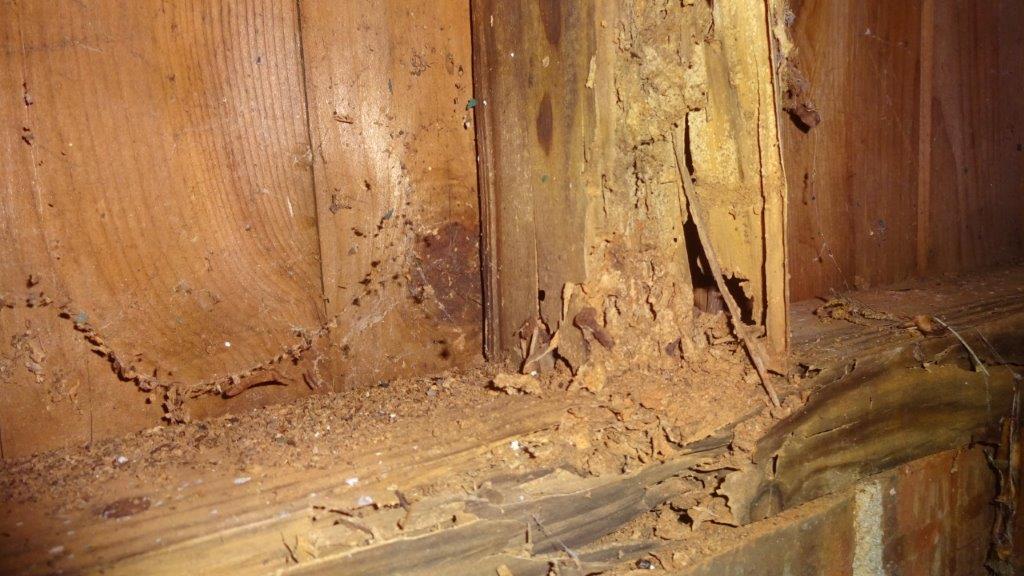The only way you can ensure you pick up the early signs of termite activity is to have regular inspections in your home. They need to be performed by experts in the pest field.
The only good news is that although there are about 300 species of termite in Australia, only a small portion of them pose a threat to property. Subterranean termites consume cellulose-containing materials like wood, and for homeowners, they are a real worry. They have the potential to cause severe structural damage to property according to a local termite treatment Brisbane company.
So, how do you know if these pests are present in your home? Danny Kelly from Pest-Ex Pest Control Brisbane shares with us some of the signs you can look for as a homeowner.
The first indication that there are termites in your home will likely be when you spot mud shelter tubes, which termites build to protect themselves. You may spot them in architraves or brick foundations. Doors and floors that sag can also be a warning sign, but it’s more likely you’ll be alerted when you find damaged wood on your skirting boards. Look out for any cracked paint or plaster. Even a power outage could be caused by termites that have been drawn to the warmth of the electrical fittings.
Your house is most at risk of a termite infestation if you live in a climate that is temperate and has high rainfall levels. Older properties are also more at risk. You can reduce the risk by implementing the following:
- If there are areas in or around your house with poor drainage or ventilation, get these sorted. You want to minimize moisture issues – including those caused by leaking pipes.
- Keep edges of buildings clear of shrubs and ensure they aren’t close to weeping holes in bricks.
- Basements or storage and ventilation areas under homes should be free of items that could attract termites.
- Get rid of wood that comes into contact with the ground in all areas of the yard.
Did you know that The Building Code of Australia requires that every new home (including new add ons) have a termite management system in place? If your house was built after July 1995, it needs to have a notice of treatment fixed to the building. This sign includes information detailing the type of termite management in place, the date, and other vital information.
Physical or chemical barriers that prevent termite infestations can be retrofitted, but it’s ideal to install them when you’re building a home.
What are the physical barriers?
They are a non-toxic, permanent form of termite control. They don’t kill the pest but rather deter them from entering the house. They include termite shields (also referred to as ant caps).
Mesh can also be installed in a concrete slab and cavity walls around pipe openings to prevent entry. Then there are composite systems that combine chemically treated plastic or sheets that degrade, so aren’t permanent. Reticulation systems can also be fitted under slabs or surrounding a building into which chemicals can be injected. Then there are traditional chemical barriers. They are applied under or around a slab or the piers or footings.
Monitoring and bait stations are a minimally toxic and affordable termite management system. They use a low-toxic chemical, which affects the termite’s exoskeleton, causing them to die off. Here’s how the system works:
- Baiting stations are placed in the ground.
- It is checked periodically for termites, and when they are found, bait is added to the station.
- The bait is spread by the termites when they return to their colony, leading to the elimination of the entire nest.
If you live in an area that is at high risk for termites, and you don’t have a termite management system in place, you need to get your property checked annually (at least).
A pest inspector will take a thorough look at all timbers under the house and in the roof as well as the outside of the building and the yard (fences, trees stumps, and wooden landscaping items included). If you have termite barriers in place, these will be checked and moved if necessary. They will also assess your risk of termite activity, such as pointing out damp areas.
If termites are found, you’ll need to look at a termite management plan. Before you sign on, check the licensing requirement for termite controllers in your state. Ask if the company is licensed and what experience the pest inspector has working in your area. You want to know they have the technical knowledge and experience required but are also informed about building practices and the habits of termites.
When you get a quote, also look for professional indemnity and public liability insurance and ask for certificates if necessary. The professional indemnity protects the manager against negligence claims that could arise from inspections, quotations, and treatments. Public liability insurance protects against injuries and of course, any damage done to your property as the result of the work. Finally, ask what warranties they offer.
















